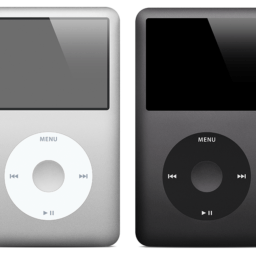Infrared therapy is a safe, effective tool in your equine veterinary procedures. Not only can it accelerate healing and reduce inflammation in most equine leg injuries, it can help to prevent injuries, and improve circulation through routine use.
When can infrared therapy help your horse’s leg injuries?
Infrared therapy works most effectively on soft tissue injuries, where it can penetrate the deepest. Here, it can increase healing by stimulating blood flow, protect against infection, and some studies suggest it has a natural analgesic effect. If your horse has just suffered an injury to a tendon or ligament, cold is your first step. However, after initial veterinary attention, infrared therapy can be very helpful in your horse’s rehabilitation. Injuries such as bowed tendons or ligament strains, which can take a very long time to heal, can be encouraged to repair faster with infrared therapy. Not only that, but as horses with these types of injuries are often restricted to their stables, infrared therapy can help reduce ‘stocking up’, which is when the horse’s legs become puffy due to lack of movement. Infrared also has a natural analgesic effect, helping to make horses with these painful injuries more comfortable with fewer medications.
Many equine lower leg injuries are injuries to the bone. In these cases, such as fractures, infrared therapy is less effective than for soft tissue damage, but it can play a role in speeding up healing. By increasing blood flow to the injured area, infrared therapy will increase the supply of healing oxygen and nutrients to the affected area. Stimulating circulation will also help to reduce inflammation and lymphedaema, especially helpful if the horse’s mobility is limited. For some injuries, like bruised or ‘broken’ knees or hock injuries, early use of infrared can help protect against permanently capped knees and hocks.
Some bone injuries aren’t injuries to the bone itself, but are consequences of overwork or poor conformation. Shin splints for example, are calcium deposits where microscopic fractures have occurred on the cannon bone. Infrared therapy can reduce the pain and inflammation the horse experiences until the splints ‘settle’ or harden. You can prevent discomfort for a horse that has had its workload increased, or who needs to work on hard ground, through routine use of infrared after hard workouts. Since infrared therapy has no dangerous side effects, you can use it daily to help prevent overuse injuries in the horse’s lower leg.
Old injuries and other conditions may also benefit from infrared therapy. However, ridding your horse of an established bog spavin, thoroughpin, capped hock or curb is almost impossible. Early treatment with infrared therapy – at the first sign of swelling, is essential.
What equipment do I need?
The good news is, you don’t need to be a vet to take advantage of infrared technology to treat your horse. With a one-time investment in some basic supplies, you will be equipped to treat your horse, whether in an emergency or for more long-term therapeutic purposes. Here are some of the best supplies for treating equine leg injuries with infrared therapy.
- Prolotex leg wraps: Prolotex uses bioceramic technology. Bioceramics uses a mixture of chemicals that naturally emit infrared rays. There are many different combinations on the market, some more effective than others, so always choose a well-known supplier like Prolotex. The chemicals used in Prolotex leg wraps are deeply penetrated into the fabrics, so they don’t rub off or wash out.
- Revitavet IR2 boots: The Revitavet IR2 system uses actual LED lights to emit the infrared. This means you can pinpoint the specific are you want to treat, and adjust the wavelengths for lesser or greater tissue penetration. It is a bigger investment than bioceramics, but once you’ve got the base unit, you can get different treatment wraps such as hock and knee boots. The unit is rechargeable, so you don’t need to plug it in while it’s on the horse, but you do need to remember to recharge it!
- Thermotex leg wraps: Thermotex uses electrically generated infrared to create therapeutic heat and penetration. The benefit of Theormotex is greater intensity than you can get from bioceramics, but the downside is the wraps have to stay plugged in, meaning you need to keep the horse near an electrical outlet. You can use up to eight heating pads, but the effect is a more general one on the leg overall, rather than the spot treatment of Revitavet.
Whichever equipment you choose, you can be sure that you have made a great investment in your horse’s health and comfort for years to come!
AUTOPOST by BEDEWY VISIT GAHZLY




